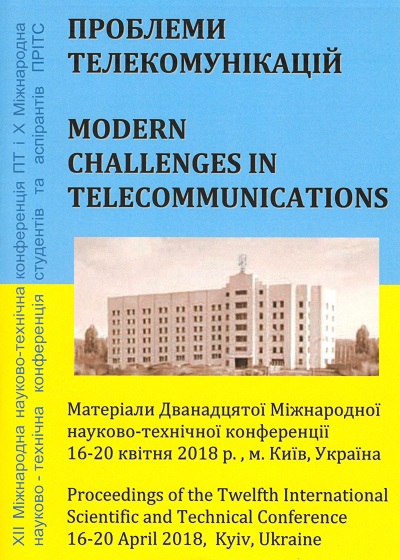МАКЕТ СИСТЕМЫ ТРАНСЛЯЦИИ СИГНАЛОВ ЦИФРОВОГО ТЕЛЕВИЗИОННОГО ВЕЩАНИЯ ДЛЯ УЧЕБНОГО ПРОЦЕССА
Анотація
Digital television system prototype for university education purposes
The design principles of DVB-S and DVB-C digital television radio signals broadcasting system prototype (RP) in 3.6-4.3 GHz band is presented. This prototype is for the purpose of students equation skills improving at such technical areas as microwave antennas and transmission lines, theory of signal generation, amplification, filtering, DVB-C standard, MPEG coding and television transport stream forming. The components of transmitter and receiver structure schemes and basic performance parameters of prototype during laboratory test are shown.
Посилання
Смирнов А.В., Пескин А.Е. Цифровое телевидение. От теории к практике. М.: Горячая Линия – Телеком, 2005. 349 с.
Карякин В.Л. Цифровое телевидение: учебное пособие для ВУЗов. М.: СОЛОН-пресс, 2013. 418 с.
DVB-S Full Line-up: From Satellite LNB through STB to TV Screen (IMS 2013) [Електронний ресурс] – Режим доступу: https://www.youtube.com/watch?v=V7SOH9ahm-0&index=3&list=LLH-NIZKgub8_-ofONEw3rdQ&t=0s – Назва з екрана.
##submission.downloads##
Як цитувати
Номер
Розділ
Ліцензія
Авторське право (c) 2018 Глеб Леонидович Авдеенко, Виталий Васильевич Трофименко

Ця робота ліцензується відповідно до Creative Commons Attribution 4.0 International License.
Authors who submit to this conference agree to the following terms:a) Authors retain copyright over their work, while allowing the conference to place this unpublished work under a Creative Commons Attribution License, which allows others to freely access, use, and share the work, with an acknowledgement of the work's authorship and its initial presentation at this conference.
b) Authors are able to waive the terms of the CC license and enter into separate, additional contractual arrangements for the non-exclusive distribution and subsequent publication of this work (e.g., publish a revised version in a journal, post it to an institutional repository or publish it in a book), with an acknowledgement of its initial presentation at this conference.
c) In addition, authors are encouraged to post and share their work online (e.g., in institutional repositories or on their website) at any point before and after the conference.

